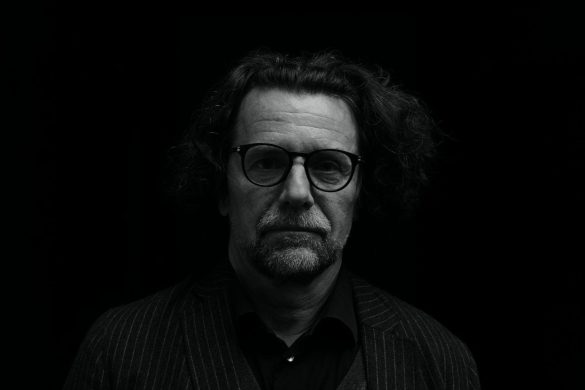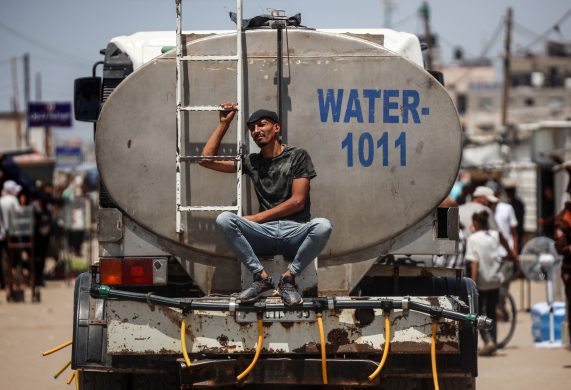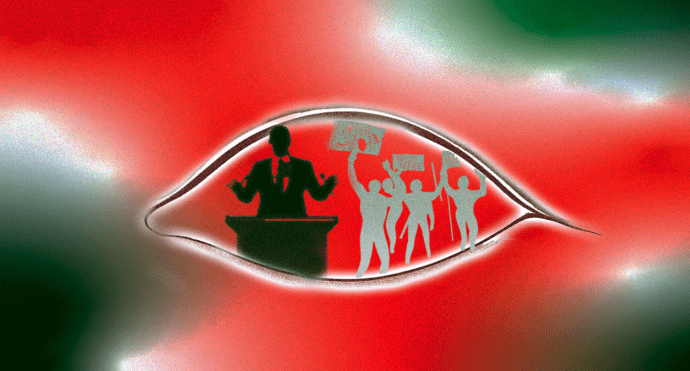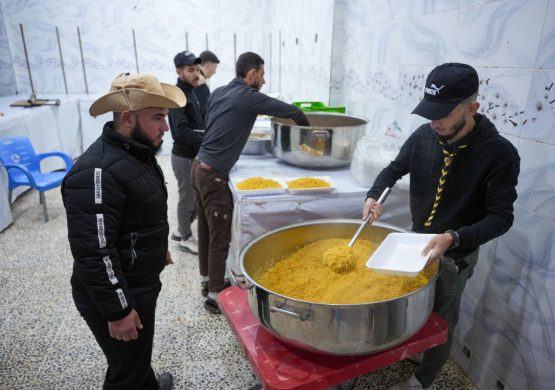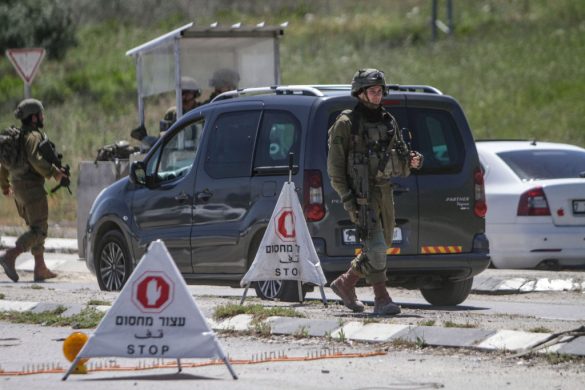Raketregn fra Gaza rammer adskillige israelske byer og i Gaza bomber israelske fly løs – begge parter forventer en egentlig ny større konflikt med muligheden for at israelsk militær – igen – rykker ind i den Hamas-kontrollerede Gaza-stribe.
SDEROT/TEL AVIV/GAZA CITY, 16 November 2012 (IRIN): Sderot’s streets are empty, its schools and shops closed. Residents of this southern Israeli town are accustomed to the alarm that sounds almost daily as rockets fired from Gaza land here.
But the upsurge in violence in recent days is, for some, the last straw.
Benni Cohen is taking his three children to a family home further north, in Petach Tikva, 20 minutes east of Tel Aviv, and does not intend to come back.
“It has been ongoing for nine years. This is not going to end. I am not putting my children through anymore of this. We should have left years ago”, he told IRIN, adding:
“Seeing your children grow up under a rain of Qassam missiles is no way to live. We have 15 seconds to find shelter [when the rockets hit]. Impossible.”
Across the border, in northern areas of the Gaza Strip, like in Beit Hanoun, a town hard hit by the border violence, many people have already started leaving their homes, heading for safer ground near Gaza City, according to Lydia de Leeuw, a documentation officer for the Palestinian Centre for Human Rights (PCHR).
But there too, they will not find refuge.
Jihad al-Meshrawi, a BBC editor, was at the office when he got word his home in Gaza City had been hit by an Israeli airstrike. When he got home, he found his 11-month-old son and sister-in-law dead, and his brother severely burned.
“I am used to editing footage of people who have had their houses destroyed and bombed, people killed. But I did not expect it to happen to me”, he told IRIN, adding:
“They say they do not attack civilians but we are civilians. Was my child armed?”
Tit-for-tat violence
According to the Palestinian Centre for Human Rights, Israeli air strikes have killed 19 Palestinians, including at least 10 civilians, in Gaza in the last two days. Another 253 civilians have been wounded, it said.
The Magen David Adom, Israel’s emergency response service, reported three dead, 10 serious or critical injuries, and at least 50 others treated for bruising, shrapnel (granatsplinter) wounds or trauma.
Israeli Defense Forces (IDF) spokesperson Yoav Mordechai said, that the military launched more than 200 air strikes in Gaza on 14-15 November, including one that killed Ahmad al-Jaabari, the military commander of Hamas, which rules the Gaza Strip.
Armed groups in Gaza have fired rockets into southern Israel for five consecutive days. On 15 November, a rocket landed in Tel Aviv for the first time since the Gulf War, with two more landing there today.
The range of the new Fajr-5 rockets puts half of Israel’s population within firing range. What was in the past nine years considered a “local hassle” for communities bordering Gaza has, in minutes, turned into a major concern.
For the first time in 20 years, Israeli authorities last night opened public bomb shelters in Tel Aviv and nearby cities. In the three hours after the rocket landed in Tel Aviv, IDF launched 70 strikes on “targets” in the Gaza strip.
“No one has slept since Wednesday [14 November],” de Leeuw said.
Israeli elections coming up
Missiles and airstrikes continue raining down on both sides of the border. During a brief conversation by phone with her, IRIN heard three air strikes in the course of a few minutes in Gaza City alone. And in Israel, one red alert is going off after another.
“We have a safety room in our apartment but I never believed we’d have to use it,” said Shira, a mother of two in Petach Tikva. “We were not at all prepared for this.”
There are differing accounts of how this round of violence started, but it is the most serious escalation since Israel’s attack on Gaza in 2008-9, which killed some 1.400 people – almost all of them Palestinian, and at least half of them civilians.
With Israeli elections coming up, and Hamas empowered by an Islamist resurgence (genopblussen) in the region, analysts say this violence could quickly spiral into another war.
Ghost towns and dwindling reserves
Læs videre på
http://www.irinnews.org/Report/96807/ISRAEL-OPT-Border-communities-prepare-for-the-worst





